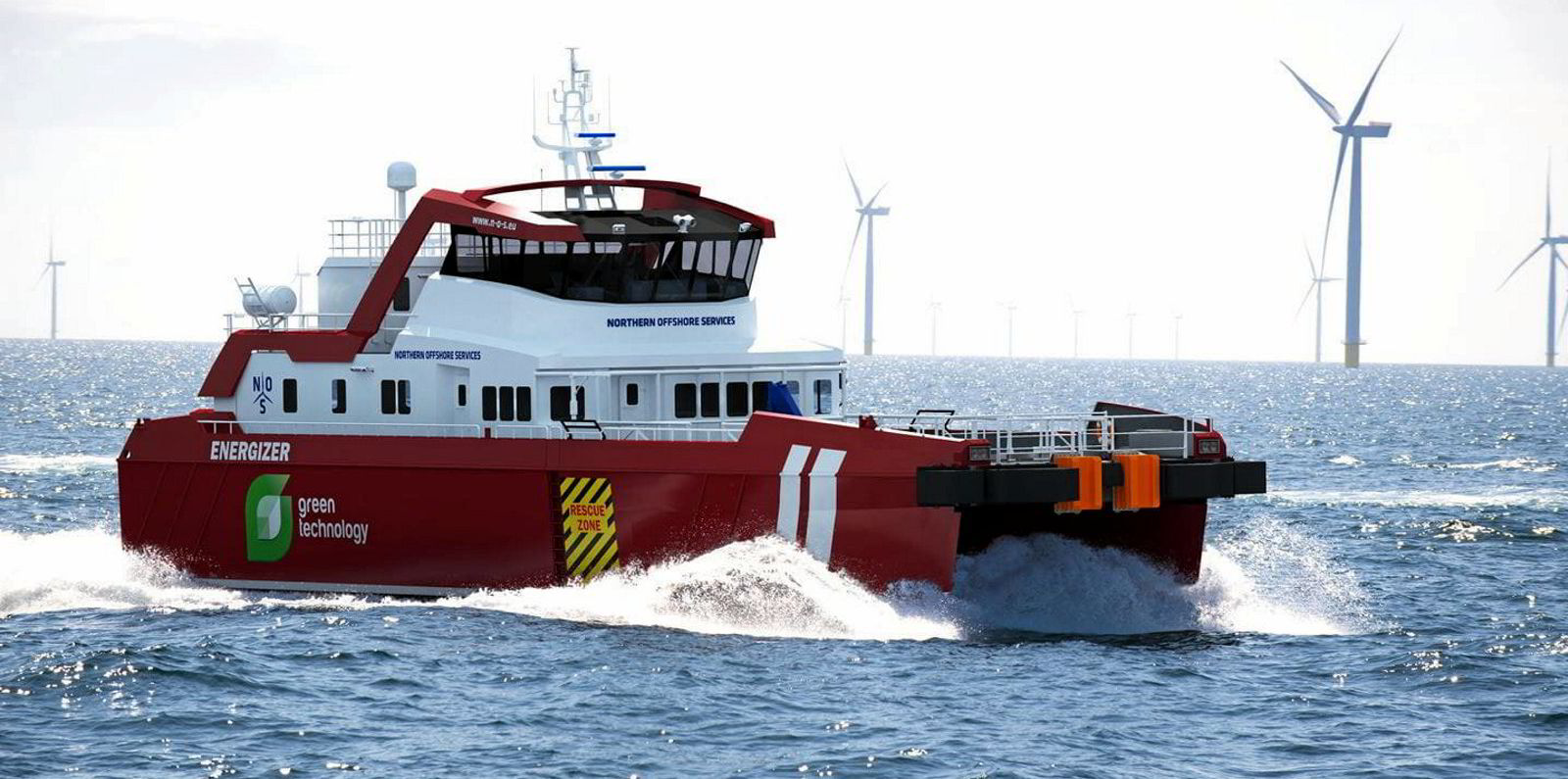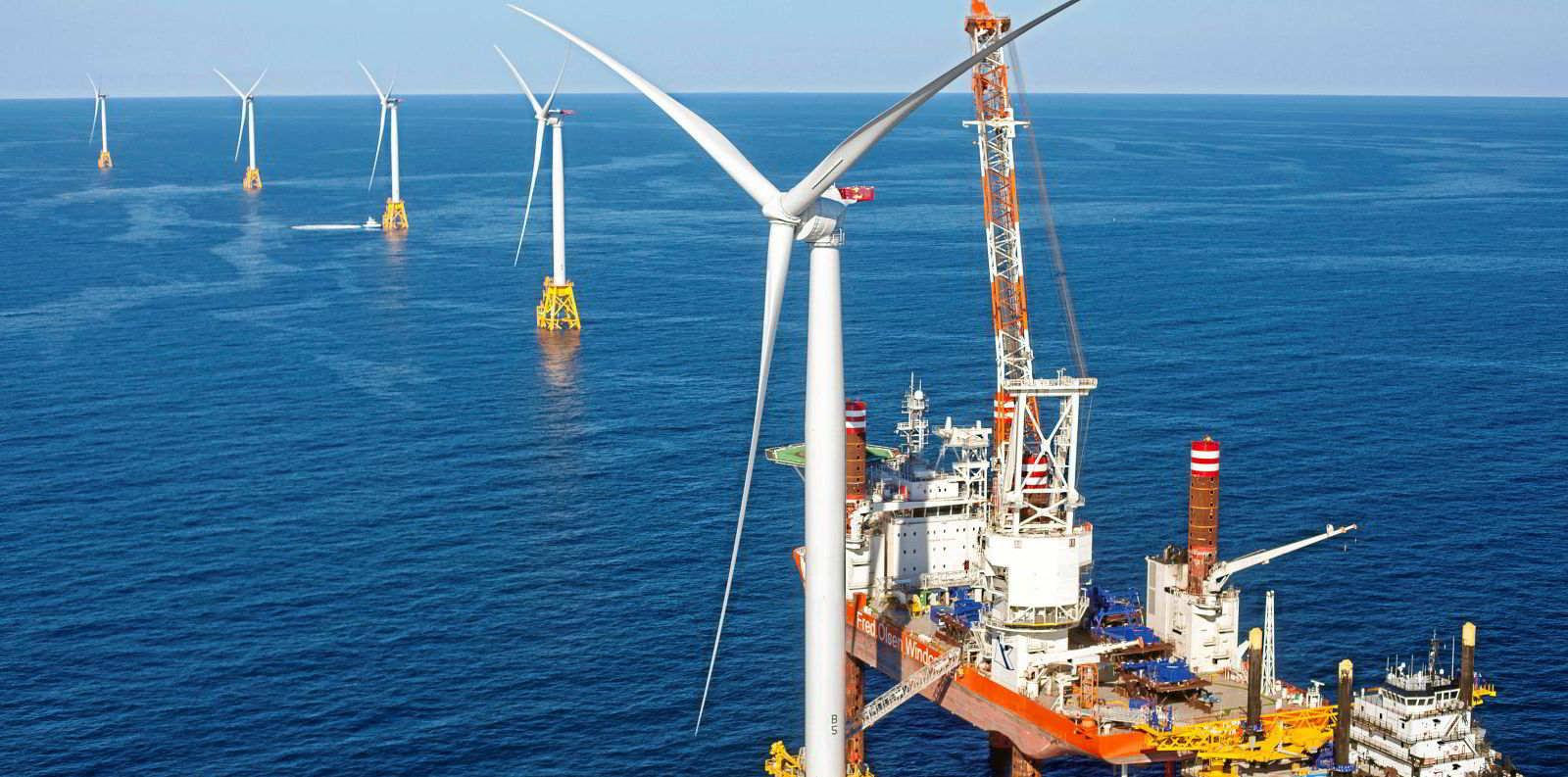Clarksons Research is bullish on prospects for wind farm vessels after revealing planned spending in the sector has risen above that of oil and gas for the first time.
Managing director Stephen Gordon called offshore renewables "a rapidly growing market with huge potential" in the company's latest update.
Last year was a record year for start-ups, with 18 offshore farms constructed, with a capacity of 5.6 GW.
Committed capital expenditure came in at $51bn versus oil and gas on $41bn.
Investments in the wind farm service fleet are also gathering pace, with pressures to limit emissions and be "green" across the supply chain, Gordon said.
Long-term projections suggest the "excitingly hot" offshore renewables sphere will play an important role in global efforts to decarbonise, he added.
Clarksons Research's own modelling forecasts offshore wind will grow to between 4% and 7% of energy supply by the middle of the century, from 0.2% today.
There is also likely to be a sevenfold to elevenfold increase in output by 2030 to more than 544 TWh.
48 more farms coming
"That's massive potential," Gordon added.
The capital expenditure cash relates to another 48 planned plants of 16.4 GW.
Half of the money will be spent in the Chinese market, as energy companies there rush to beat a subsidy deadline at the end of this year.
And the division of shipbroking giant Clarksons believes further record investment will be seen this year.
By the middle of this decade, there could be more than 350 farms with 15,000 turbines and capacity approaching 90 GW.
This compares to 160 farms of 31 GW now, with 7,200 active turbines.
Gordon argues there is also "exciting potential" in the US, particularly with the new Biden administration, and also in Vietnam and Japan.
All this means more ships are needed to build and service the farms.
"Having initially 'borrowed' or converted many assets from offshore oil and gas, the offshore wind fleet is moving towards specialisation," Gordon said.
This includes dedicated wind turbine installation vessels (WTIVs), crew transfer vessels and walk-to-work fleets.
Fleet is growing

Clarksons Research identifies about 875 units that are active across the wind market, with a further 125 newbuildings on order.
The sector is so attractive that Scorpio Bulkers is selling all its bulkers to invest in WTIVs, which can earn more than $200,000 per day.
"Investment and technology decisions can be tricky, given the nature of a quickly growing market," Gordon said.
Trends towards bigger turbines, floating farms and wider geographical spread all need to be considered, he added.
"We have identified a relatively small number of alternative-fuelled or battery hybrid vessels," Gordon added.
The traditional oil and gas offshore support vessel (OSV) market has been clobbered by pandemic restrictions and oil price falls.
Budgets slashed
Clarksons Research had projected $116bn of oil and gas investments for 2020, before Covid-19 struck.
By the end of 2020, rig utilisation had fallen to 70%, a loss of about half of the gains since the 2017 market low point.
"However, the experience for many was notably more difficult than this suggests, with multiple owners forced into Chapter 11 proceedings within weeks of the global lockdowns hitting oil demand," said Clarksons Research analyst Calum Kennedy.
Demand for OSVs fell 8% during the year, leaving the active vessel count trending towards the post-2014 low.
Utilisation declined to 58% by the end of the year, and the Clarksons OSV rate index dropped 16% across 2020.
More "liquid" areas of chartering, such as the North Sea, saw rates slump rapidly during the second quarter.
"Demolition remains a difficult task for the diverse ownership of the OSV sector, particularly given the low steel content of OSVs," Kennedy said.
There was a 16% rise in the number of ships laid up, however.
Clarksons Research believes that of the 1,117 offshore vessels currently stacked, many are now likely to end up "scrapped-in-place" in ports.
"With the pandemic still limiting oil demand, offshore sectors once more face challenging conditions in the short to medium term; the long-term outlook remains uncertain," Kennedy added.
"However, with renewables increasingly a bright spot, 2020 also demonstrated how the accelerating green transition may evolve into a key driver of offshore activity in the years ahead."








